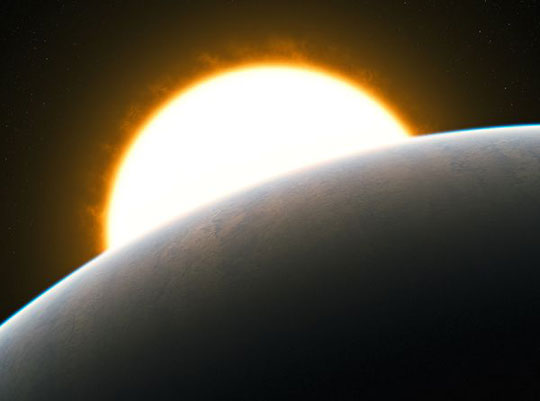The Milky Way has billions of planets close to Earth
The Milky Way contains at least 46 billion planets of the same mass as Earth. That incredible amount makes the ability to find life on other planets much bigger.

A planet and its own star outside the solar system.Photo: National Geographic.
The results show that small planets are superior in number compared to large planets. About 6.5% of the stars in the Milky Way are surrounded by medium-mass planets, which is 10 to 30 times the globe. 11.8% is surrounded by planets with 3 to 10 times the mass of Earth.
Through extrapolation, the team calculated that 23 percent of the stars in the Milky Way have smaller planets, that is, two to three times the mass of our planet. If we count the numbers, our galaxy has at least 46 billion such planets.
' The data shows us that our galaxy contains approximately 200 billion stars and at least 46 billion planets roughly the size of Earth. We have not counted big planets equivalent to the globe but away from their own stars in the spaces where life can exist , 'said Geoff Marcy, an astronomer in the research group.
The study also shows that it is quite possible that planets that qualify for life support are quite common forms of galaxies in the Milky Way.
' We can't see all the planets of the same size or mass as Earth, but we can predict their numbers. Such planets are like countless grains of sand on a beach, meaning they exist everywhere , "said Andrew Howard, the team leader.
Giant planets cannot nourish life because of their harsh environment. For example, because the gravity is so large, the giant planet often attracts meteorites towards them, causing meteor shower. Meanwhile, small planets have more favorable conditions, but only planets with liquid water and air are able to nourish life.
So the distance between them and the individual star should not be too close or too far. If too close to the star, the surface temperature of the planet will be high, causing the water to evaporate continuously. In the case of too far away from the star, the planet's surface temperature will be low to freezing. Life is hard to survive in both ice and steam.
- There are billions of planets like Earth
- Mysterious planets have a 'mother' from another galaxy
- 100 billion planets reside in the Milky Way
- Can the planet exist between the Milky Way core?
- There are at least 50 billion planets in the Milky Way
- Why can't we 'encounter' aliens?
- 'Star' also plays basketball
- 100 billion planets in the Milky Way
- Images of 1,235 planets may have life
- The Milky Way had 'devoured' another galaxy billions of years ago
- Discover more than 700 planets outside the solar system
- Enjoy the pure Milky Way season
 Van Allen's belt and evidence that the Apollo 11 mission to the Moon was myth
Van Allen's belt and evidence that the Apollo 11 mission to the Moon was myth The levels of civilization in the universe (Kardashev scale)
The levels of civilization in the universe (Kardashev scale) Today Mars, the sun and the Earth are aligned
Today Mars, the sun and the Earth are aligned The Amazon owner announced a secret plan to build a space base for thousands of people
The Amazon owner announced a secret plan to build a space base for thousands of people